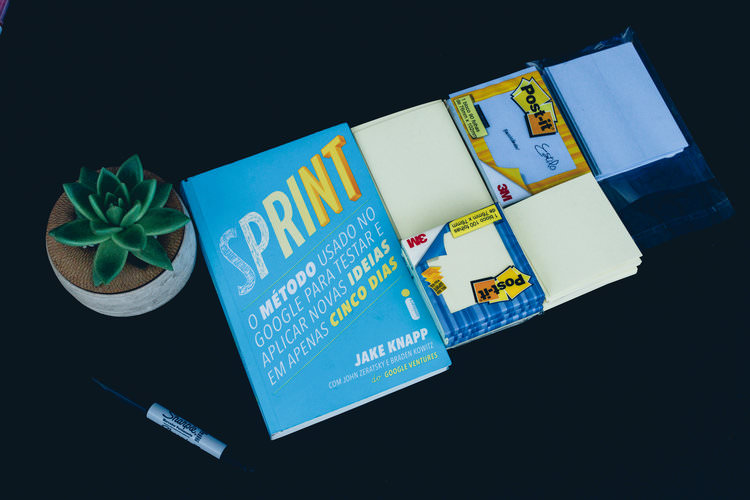I recently wrote a blog post for the UX collective about excuses startup founders use to avoid customer feedback early in their product lifecycle. These excuses are not only limited to startups – often, they are widespread even in established companies with successful products on the market.
Let’s face it, dealing with customer feedback can be difficult at any stage. Unfortunately, we’re all very good at filtering out the feedback we don’t like, preferring to focus on the positive feedback and sales or conversion numbers. We have to remind ourselves that not knowing why a product is selling well can be just as dangerous as having a poorly performing product.

How will you change your strategy when sales drop if you don’t understand why customers are buying your product? How will you plan your next products without knowing what contributed to your current success? These are just a few of the reasons why there is no real substitute for getting in-depth customer feedback that comes from user interviews.
The good news is that it’s never too late to start incorporating customer feedback in your development, sales and marketing workflows. With practice, you can start recognizing excuses we all make and remind yourself that behind every excuse there’s an opportunity to optimize your resources and build better products.
Here are the excuses we’ll cover in this post:
-
Our new product or functionality isn’t finished yet, we’ll wait for the first release.
-
We haven’t even started development yet and are exploring different possibilities.
-
Our customers don’t like change, we don’t want to scare them off.
Our new product or functionality isn’t finished yet, we’ll wait for the first release.
Getting feedback on an unfinished product or prototype is harsh. When you already have existing customers, showing them something unfinished sounds even riskier. Won’t they lose faith in your ability to deliver great products? What if they don’t like your new direction? Why do they keep commenting on unimportant details? Don’t they see how this product changes everything?

The safe way is, of course, to spend just a few more weeks polishing your new product or functionality. The trouble with this approach is that weeks easily turn into months or even years, and by that time the market might change completely, and your current assumptions will be outdated. Not to mention that the longer you wait to get customer feedback, the more difficult it becomes to admit that you’re building the wrong thing and write off months of development as a sunk cost.
That is why you can save significant resources by involving your customers early in the development process when it’s still easy (and less painful) to change course. You don’t have to show your unfinished release to every customer. Select a few customers (five is usually more than enough) with whom you have a good existing relationship and who are a bit more forward thinking. Be clear when showing them prototypes that what they see is not set in stone and that you’ll be using their feedback to improve (but don’t promise them any specific features yet, this is not a sales activity). You can reward early customers for their feedback with discounts, extra licenses or other valuable compensation. By doing this, you’ll reinforce your existing relationship and show them that your company is just as agile and forward-thinking as any startup, and the product or features you end up developing based on customer feedback, will have a better fit for the wider market.
We haven’t even started development yet and are exploring different possibilities.

That’s an excellent opportunity to get some early feedback! At our previous startup, we used the design sprint methodology to test our assumptions before wasting weeks developing something that wasn’t really needed. A design sprint forces your team to look at the big picture of the problem you’re trying to solve and expose a prototype to living, breathing people — all within one week. The user interviews can involve your existing customers or give you an opportunity to try your ideas on a new customer segment.
The process isn’t easy, it will leave you exhausted, and watching the Friday user interviews will likely be profoundly painful. But wouldn’t you rather spend just one week to find out you’re off target than waste months building something nobody cares about?
Our customers don’t like change, we don’t want to scare them off.

Nobody likes change that’s forced upon them. This is especially the case if your existing customers already invested significant amounts of time and money to integrate your product into their workflows and systems. This is also a good reason to include your most loyal and dedicated customers in your development process early on, especially if you’re planning significant changes to your product. When doing so, let your existing customers know you won’t force them to change until they’re ready and that you’re getting their feedback early on precisely so you can test new concepts and find ways to make a possible transition and upgrade process easier on them. They will likely appreciate your openness and transparency and the opportunity to prepare for bigger changes.
At the same time, keep in mind that your existing customers might never be able or willing to adapt to the new version you’re building – that’s also a possible outcome of user interviews. In this case, it might make more sense to keep the old version around for existing customers and test your new version with potential customers who are considering your product as an option or on a new segment you’d like to expand into. Either way, your existing customer base will appreciate the reassurance that you haven’t forgotten about them as you start chasing the next big thing.
We already have analytics for product usage, monitor social media and support tickets, and measure our NPS score.

That’s great! Knowing how users interact with your website and product can help you make better business decisions, and monitoring social media sentiment or overall brand perception can help you prevent or better deal with PR disasters. However, if you want to improve your product in a more significant way, you also need to understand why your users or website visitors aren’t converting or using certain features and why they’re suddenly less likely to recommend your product to their friends.
Support tickets and questions you receive about your product can often reveal important pain points but the problem is that you often don’t hear from frustrated customers who suddenly decide to quite or the potential customers who never bother registering or getting in touch because they don’t understand the value you provide.
To uncover hidden weak spots, there’s no substitute for in-depth user interviews or user test, during which you try to understand how your product fits into your customers’ lives. A couple of interviews are often enough to uncover the most pressing issues.
We don’t want to bother our customers.

Your customers are busy, you’re busy, you don’t want to bother them. But most people actually love the opportunity to talk about themselves and the challenges they’re facing, especially if you conduct the user interview that puts your customers front and center (as you should). The opportunity to influence the development of your product might also be a motivator for some of your customers.
As already mentioned, you can reward customer participation with discounts and special offers or maybe invite them to a special lunch to reinforce your existing relationship. Having an existing customer base that already knows you and trusts you is a significant advantage you have over startups. Learn how to tap into your existing relationships in a way that benefits both you and your customers.
People don’t really know what they want.

True, you shouldn’t expect your customers to give you a list of features for your product and neither should you immediately implement every little wish. Instead, focus on understanding how your product fits into their workflow.
It’s also very tempting to mistake every “Sure; I’d use this!” for a clear validation of feature or product idea and then end up frustrated when nobody actually uses the requested feature. Go deeper: why are the customers asking for a feature? What problem are they really trying to solve?
Talking to people about why they don’t like our product is hard/awkward, so we outsource it and just read a report.

Absolutely, which is why a lot of companies avoid doing that and hire external help to do this job for them and deliver a sanitized report. Unfortunately, there’s no good replacement for having your own employees do user interviews and solicit deeper feedback that goes beyond “Everything is great, we like your product.”
There is one little trick that can make user interviewing easier: preparation! No matter how good somebody is at talking to people, they should spend time preparing for each customer interview to get the most of it. The first step is to prepare an interview script based on your current business goal. This is an excellent guide on how to prepare for and conduct user interviews, the interviewer should be familiar with the product and the business goal but still able to maintain an objective distance to avoid feeding expected answers.
Colleagues and friends can help the interviewer practice the script beforehand. The first few tries will feel awkward, which is why practicing with real people is important to built confidence and objectivity. To get the most out of user interviews, separate the interviewer role from note-taking. During the interview, the interviewer should only focus on being a curious listener, while the rest of the product team can take notes and give feedback to the interviewer after the interview.
We are our own customers, we know our pains.

Ah, a widespread lie we tell ourselves. If you’re building your product for customers like yourself, you might be in a good starting position to understand your customer pains. But it’s also difficult to be critical of your own work and to admit that you’re basing it on unverified assumptions. Unlike you, all your other customers have no insight into the thought process that guided your design decisions, and they will likely be confused by the things you find most obvious. So, even if you’re your own customer, do test your website and product with other customers, you’re very likely to discover a new perspective.
Our product is special, we can’t easily build a prototype.

Here’s a secret: everyone thinks their product is special and unique! Despite this, there are always ways to test your product assumptions and prototype key interactions. For instance, you can also get feedback on your product website or pitch. Knowing that you’re meeting a real demand is even more critical if you’re about to invest heavily into a hardware product or opening a brick and mortar store. Even being in a highly regulated industry is no excuse, you can learn a lot just by discussing pains and problems with potential customers. The design sprint book has several excellent examples of how you can design a testable prototype in a week. If a robot company and a medical clinic were able to do it, so can you!
* * *
I hope these tips help you turn excuses into opportunities that will help your company optimize resources while delivering products and new features the market actually finds valuable.
If you need help at any point, Artesia is here to help; getting high-quality customer feedback is a crucial part of our product diagnostics or innovation services.

 Alja Isaković
Alja Isaković